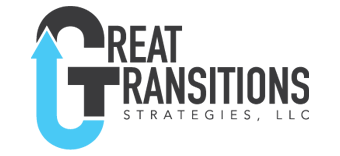A Texas couple was visiting Rome on vacation walking to a restaurant. They spent significant time with the hotel concierge, well known for his knowledge of the local restaurants before making their decision. He had made several outstanding recommendations for them this past week after spending some time determining what type of food they enjoyed. Struggling to find the restaurant in the maze of streets in Rome, they spot a family of four with the mom wearing a Texas hat. What a relief, someone they can talk with. Funny coincidence is they are from the same county back home. The couple relates their predicament of being unable to find this highly touted restaurant and wanted to see if they could help them?
Not being familiar with the restaurant or neighborhood the family is unable to provide directions. However, they were able to direct them to a “great” restaurant they just went to last night, their first night ever out of Texas. The couple thanked the family and headed off to the newly recommended restaurant.
Why did this Texas couple “trust” complete strangers who had very little expertise on Italian restaurants in Rome?
- Common background
- Friendly connection
There are all types of situations where complete strangers trust each other. Think of a flight crew on an airliner, emergency response personnel at the scene of a mishap, an operating room team. Why then is it so difficult to trust coworkers particularly when we are working remotely?
Let’s look at a remote work situation.
Brenda working remotely was struggling with a marketing project she was assigned after being on the job for two weeks. She was not feeling great about her team at this time due to limited interaction and a perception of ultra-competitiveness. She wanted to reach out for assistance outside of her boss and team but was not sure where she should look. After some thought, she contacted a mentor, Marie from her onboarding process. Marie happened to be an alumnus from the same MBA program. Brenda also made a friendly connection with her, having lunch with Brenda twice during onboarding, and was impressed by her experience.
What Brenda experienced is commonplace for the remote work environment. Isolated, not sure where to turn for assistance, and confessing to your team and boss you need help.
Her solution was also commonplace; reaching out to a colleague she came to trust after several short interactions.
What made Brenda willing to trust Marie, after limited interaction? Cognitive and emotional trust. Assumed reliability and a caring connection.
- The friendly connection
- The common MBA program
- Assumed competence
Let’s continue the story. Marie recommended Brenda contact Robert, who has a background in the area she is struggling in an adjacent department. She does, has a productive meeting, and was able to move forward on her project.
Why is she trusting someone she has not even met?
- Credibility based on a reputation from someone she trusted
In her book The Remote Work Revolution; Tsedal Neeley identifies two types of trust, cognitive and emotional. Cognitive trust is based on logic and thought. It usually occurs quickly and is based on your belief that the individual is reliable and dependable.
Emotional trust is built on an emotional connection, care, and concern about someone. It can take time to build emotional trust.
Both are important and are in my opinion additive. When you think of the above examples it is clear where the boundaries were.
- The Texans had cognitive trust – determined quickly through a thought based on a belief of reliability.
- The concierge had cognitive trust and emotional trust. Proven capability and a personal connection.
- Marie had cognitive and emotional trust
- Brenda’s teammate and the boss had neither
What is important in the workplace? Think of your best team experience and categorize the trust that permeated that team. Was it cognitive, emotional or both?
Probably, both.
To make your remote team effective you have to build both. These are built by knowing who you are working with, spending time working and interacting together. We generally trust coworkers immediately because of their position. As we learn more about their credentials, work habits, expertise, and ability to deliver, our trust grows or wanes. This is primarily cognitive trust. Is that enough to be a high-performance team?
The continued interactions, developing personal relationships, support for others, all build emotional bonds. That is where emotional trust is built. If you have no emotional bond or connection, that equals no emotional trust.
Building cognitive and emotional trust in your team requires creating opportunities for interactions that allow both to develop. The concept is simple, execution is challenging.
Currently many remote environments are an “all business” approach. Virtual video meetings, conference calls, and group chats are agenda driven. The time and ability to interact socially, as we often experienced in-person, is significantly reduced.
J. Richard Hackman and Ruth Wageman from Harvard studied team performance for decades and developed what is now called the Six Conditions Model. Their research confirms that leaders who effectively establish the six conditions with their team remove 70% of the variability of team performance. Those six conditions help establish both emotional and cognitive trust.
Without going into the details of the entire model; here are three elements from the model that build cognitive and emotional trust.
- Creating a high level of interdependence between team members
- Assembling the right mix of skills on the team
- Establishing norms of behavior that are modeled and enforced
To implement each of the above takes engagement and interaction between team members. Interdependence requires learning about each team member. The right mix of skills immediately builds cognitive trust. Establishing team behavioral norms that necessitate a wide range of engagements from social to “business only” has the potential to create trusting relationships.
The bottom line: Connect your team cognitively and emotionally. Reduce isolation and ensure each member of your team is connected and contributing.
As leaders, creating professional and social interaction may be the greatest method to bring trust to your team. Find ways to create meaningful interactions in the remote environment that fit with your team and its culture.
What do you need to do to connect your team cognitively and emotionally?




